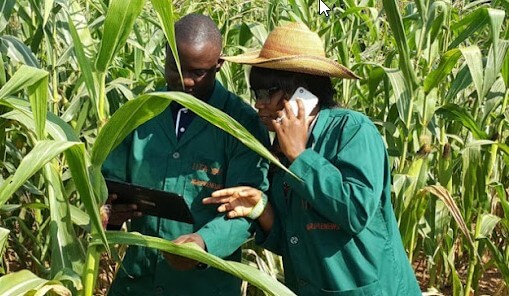
Covid-19 has imposed serious limitations on development work. International NGO staffers will not be travelling as much as we have been.. Traditional face-to face training will be limited or of necessity prohibited altogether. However, community-level training must still be delivered.
Such training is not impossible, but there will be big changes in how we do it. Training once delivered face-to-face will have to be adapted to distance learning modalities. The leading contenders are Information and communication technology (ICT) for participatory instruction based on tablets and cell phones. Traditional media, radio and television, will also play a role.
Much of this was being planned for and adopted before Covid. Distance learning is cost effective and especially appropriate for those participants (especially women) who cannot put aside their domestic responsibilities for extended attendance at training centers.
In many regions, conversion of classroom instruction to distance learning is well under way. Small scale and subsistence farmers are already reaching out for it, seeking knowledge on their own through youtube videos and other media.
That said, the delivery of hands-on practical skills training through remote learning remains a major challenge. In principle, ICT allows for real time two-way capability enabling remote supervision of student’s hands-on learning activities.. However, this is a brand new field and much pioneering work remains to be done.
Some tasks will be of immediate concern to training designers when selecting training modalities:
- Obtaining detailed and accurate information about the local accessibility of data services and devices–cell phones, wi-fi and other media such as radio and television. Funds may have to be allocated to provide digital devices, cell phones and other infrastructure for the use of participants..
- Obtaining detailed and accurate information about the media literacy of participants.. Initial training of participants in the use of digital devices and other media is likely to be required.
- Increasing resources directed to train-the-trainer programs, especially with respect to distance learning techniques and platforms. Remote training requires new skills and strategies which must be mastered. These considerations apply to training managers and monitoring and evaluation teams as well.
Covid presents training designers with serious obstacles but also with a promising opportunity. In the long run, our efforts will help create a local cadre of training professionals capable of designing and delivering remote training in fields beyond the scope of any project at hand–which local government and private sector training providers are presently striving to do.
————-
For further reading:
Information and Communication Technology (ICT) in Agriculture, FAO 2017
http://www.fao.org/3/i7961e/i7961e.pdf
Skills development in the time of COVID-19: Taking stock of the initial responses in technical and vocational education and training; ILO 2021
https://www.ilo.org/wcmsp5/groups/public/—ed_emp/—ifp_skills/documents/publication/wcms_766557.pdf
